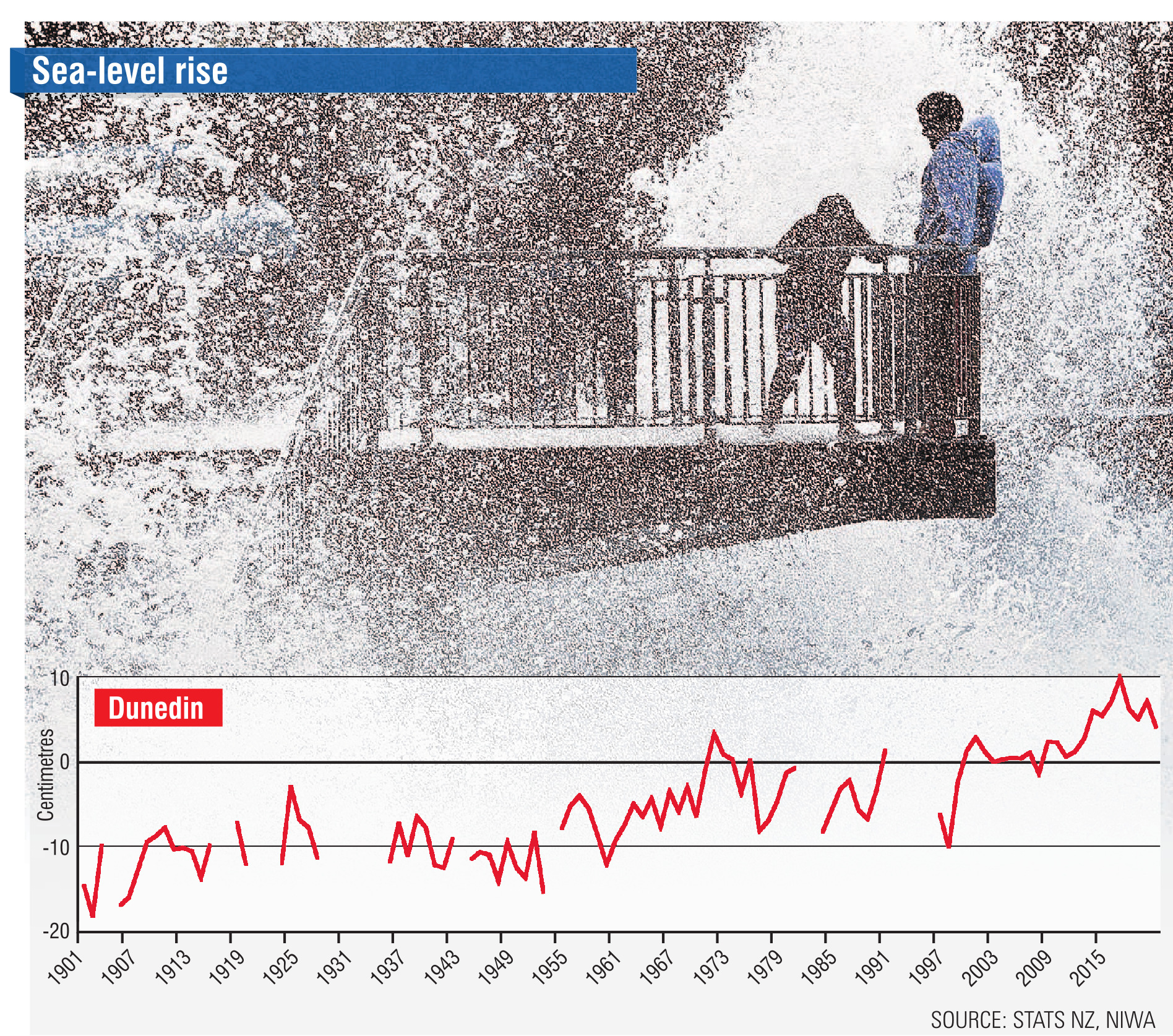
Stats NZ environmental and agricultural statistics senior manager Michele Lloyd said the recently updated statistical environmental indicator, "coastal sea-level rise", showed that at New Zealand’s four main sites with records dating back more than 120 years sea levels rose more quickly over the past 60 years than the previous 60 years.
The rate of sea-level rise had doubled in the 60 years to 2020 at three out of the four sites — Wellington, Lyttelton and Dunedin — compared with the mean rate from 1901 through to 1960, she said.
"Future climate change projections indicate that sea levels will continue to rise," she said.
"Rising sea levels affect coastal communities, infrastructure, coastal habitats, and biodiversity."
Wellington (1891) holds the longest records of sea-level rise, followed by Auckland and Dunedin (1899), and then Lyttelton (1901).
New Plymouth (1920) and Mount Maunganui (1951) also have long-term records incorporated into the Stats NZ analysis.
Based on available data to 2020, annual mean coastal sea levels rose relative to land at all six monitoring sites around New Zealand, the government department said.
Among the four main sites, Lyttelton showed the highest 120-year trend in relative mean sea-level rise (which included vertical land movement) at 2.24mm/year.
Dunedin, at 1.52mm/year, recorded the lowest rise over the past 120 years among the four main sites, the data shows.
However, the rate at which the sea level is rising in Dunedin is itself on the rise: from 1901 to 1960, sea-level rise along the city’s coast was 0.69mm/year, but then in the 1961–2020 period, it more than doubled, increasing to a 1.76mm/year rise.
The relative sea-level rise included local or regional changes in vertical land movement including uplift or sinking, Stats NZ said.
This could be caused by geological processes such as tectonic and volcanic activity, or human activity, which could cause land subsidence.
Nevertheless, climate change was one of the main factors, Stats NZ said.
When carbon emissions warmed the Earth’s atmosphere, heat was absorbed by the ocean and the warming caused the sea water to expand.
Additionally, melting ice in or around sea water added to the total volume of water, further contributing to sea-level rise.












